Bodybuilding, CrossFit, Strongman, Powerlifting, and Olympic Weightlifting all use different techniques and have different objectives but share one thing — strength. Fitness trends might change, and ideal physique aesthetics might evolve; strength, however, is never going out of fashion.
Let’s talk about conditioning — not physical but mental. You expect a young man (below the 50s) to be strong. It’s okay for him to have sub-18-inch arms, but he better be strong enough to chop wood or at least be tough enough never to make a second grocery bag trip.
On the other hand, we allow the older men some leeway. You never look at an old man who fails to climb a staircase with his luggage with antipathy. You resist asking an old man for a hand while changing a tire. You don’t want old men to sprain their backs or pop a joint while doing physically challenging tasks.
But then, one fine day, a man with silver hair outworks you in every lift at the gym without even breaking a sweat. That’s old man strength.
It makes you wonder if all other older men are not fragile but lazy. If this sounds too harsh, you’ve never gotten your butt handed to you in the gym by an old timer.
What is Old Man Strength?
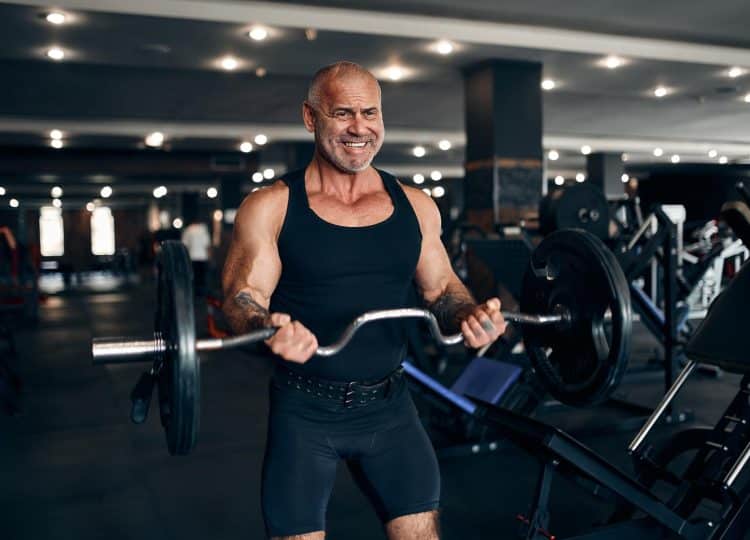
Level Up Your Fitness: Join our 💪 strong community in Fitness Volt Newsletter. Get daily inspiration, expert-backed workouts, nutrition tips, the latest in strength sports, and the support you need to reach your goals. Subscribe for free!
“My daddy strongest!”
You’ve probably used this sentence more than once growing up. This sentence follows a lengthy (and usually exaggerated) feat of your old man’s strength. You, however, stop making this claim as your daddy gets older. How many freshman-year students have you seen bragging about their dad’s pythons?
Teenagers and men in their 20 and 40s are conscious about their physique. Strength and physique aesthetics, however, take a backseat as they near their 50s. Furthermore, the ‘dad bod’ trend appeases physically unfit men. We are all for body positivity, but some folks use the dad bod hashtags on social media to evade working out while spewing venom on jacked old boys.
Old man strength is the ability of oldies to retain their younger year strength. Old man strength is at display in its full glory when greybeards crush heavy weights in the gym, beat men half their age in arm wrestling, or move around heavy objects like its no one’s business.
Witnessing old man strength makes you stop dead in your track and question everything you know about getting older. It tells you as much about the strong older gentleman as about yourself.
Most strength sports, including bodybuilding, CrossFit, strongman, and powerlifting, have a master’s class that accommodates older athletes with no plans to renounce their competitive spirit. Interestingly, master’s divisions are gaining traction and see a bigger athlete and fan participation every year.
Old Man Strength and Hormones
Talk about old man strength with the seniors, and they’ll school you about hormonal changes. If you want a crash course on declining testosterone levels with age, try talking about muscle gains with an elderly at your gym. Although these claims are valid, how many elderly folks do you see pushing it hard in the gym? [1]
Strongman Mark Felix, bodybuilder Kamal Elgargni, CrossFitter Jacinto Bonilla, and powerlifter Rudy Kadlub are some older athletes that kept their declining test levels from dictating terms.
Sources of Old Man Strength
There are several ways to define old man strength and how oldies can accumulate strength:
The Industrial Age
You’ve probably heard your grandparents tell you how hard they worked in their time and weren’t satisfied until their shirts were sweaty. They also scoff at you and your work-from-home desk setup. Unsurprisingly, our oldies are confident while challenging us to an arm wrestling match or sprint. They believe they can beat our memory foam chair-addicted tooshies.
Many old-timers worked blue-collar jobs, and they had incredible task-specific strength. They have seen some rough times, including multiple economic recessions. A lifetime of physical labor made our elders hard inside out. The strength you build working manual labor doesn’t disappear overnight.
Prolonged Strength Training
Weight training has been around for time immemorial. Although old-timers lacked Prime machines (fitness equipment company), kettlebells, dumbbells, barbells, clubs, and maces are just as effective at building strength and muscle.
The folks we refer to as elderlies in this article were born between the 1950s and mid-1970s. While there are oldies that were born in the 1940s and still train, it is a minority. Furthermore, you don’t expect them to be crazy strong.
Incidentally, the 1950 to 1970s are known as the golden era in bodybuilding. Folks relied on lifting heavy and eating right in those days. They lacked the advanced sports supplements available to us at a click. Athletes of that era had performance-enhancing drugs (PEDs), but drug abuse cases were rare.
Although strongman, powerlifting, and Olympic weightlifting have always involved lifting heavy, golden-era bodybuilders too went hard and heavy in the weight room. You never heard of bodybuilders that only used machines and lifted light weights. Arnold Schwarzenegger, Mike Mentzer, and Tom Platz were known for their hardcore, gut-wrenching training styles.
Folks training heavy since their early years build dense muscle, making them stronger and more conditioned. Plus, a solid foundation allows you to double down on your initial progress. Once you’ve mastered the movement patterns and techniques, you can only go up from there.
Read also: Muscle Maturity and How to Achieve It?
Muscle Memory
Training for 50-60 years without taking a few months or years off is unheard off, especially when you train hard and intense. Many things can take you out for months (or years), including an injury, a significant life event, or even fatigue. Those that love strength sports, however, return to the iron paradise sooner than later.
One of the best things about lifting weights is that you build muscle memory. Although you’ll see strength and muscle loss during your time off, you’ll regain the lost ground within a few months of restraining training.
Adrenaline Boost
You’ve likely seen an old man dash across the terminal with his handbag to make the final boarding call or an elderly hitting the punching bag at an arcade machine like a UFC fighter. Although the old-timer might tell you about his physical endurance and feats after a good show, chances are what you saw was a one-time event fueled by adrenaline.
You should learn to separate adrenaline rush from strength. An individual might not be able to repeat his adrenaline-supported performance, but strength-backed performance can be duplicated. Finally, magic happens when strength and adrenaline combine.
Level Up Your Fitness: Join our 💪 strong community in Fitness Volt Newsletter. Get daily inspiration, expert-backed workouts, nutrition tips, the latest in strength sports, and the support you need to reach your goals. Subscribe for free!
How To Develop Old Man Strength
Although you can lose weight and gain muscle at any point in your life, it gets harder with age. The process of building old man strength needs to start in your younger years. Pushing the envelope in the weight room later in life can do more harm than good.
It’s easier to cruise into the grandpa life with decent strength than build strength from scratch. Below are two approaches to building and maintaining old man strength based on life stages:
Younger Year Training Approach For Old Man Strength
The ultra-strong old men you see today have been training for decades. Although you can start training in your mid-50s and get strong for your age, your chances of becoming a killing machine go down into the single digits. Below are some tips that you should incorporate into your training to hold onto your strength:
1. Start Early
If you want to get and remain strong for the rest of your life, you should start training at the earliest. When is the best time to begin training in your youth, you ask? Yesterday.
The best time was yesterday; the next best time is today. Most youngsters waste their time thinking that lifting weights will stall their growth. This is one of the oldest myths about lifting weights, and it refuses to die.
Contrary to popular opinion, lifting weights can help tweens and teens improve physical performance and overall health. The Governator started lifting weights at 15 and is 6-feet-2-inches tall. Everything worked out fine for him. Are you planning to outlift Arnie? [2]
Must Read: Does Lifting Weights Stunt Growth?
2. Make The Big Three Your Darlings
The squat, bench press and deadlift are the best exercises to build strength and muscle mass. These are compound (multi-joint) exercises that add functionality and improve your performance in day-to-day activities.
You could follow a single-muscle or double-muscle training program, a push-pull-legs regimen, or any other fancy regimen. Nonetheless, ensure that these three lifts are the pillars of your training routine.
3. Put Isolation Lifts on the Back Burner
Isolation exercises like the machine preacher curls, pec deck fly, and rear delt fly are a crowd favorite. They deliver a muscle-ripping pump and make you look and feel like a champ. Single-joint moves, however, do little to nothing for your strength or functionality.
You could include isolation exercises in your training regimen for conditioning and establishing a mind-muscle connection, but keep them to a minimum. Leg extensions cannot equip you to carry your buddy on your back through a jungle. You have squat for that.
4. Focus on Mobility
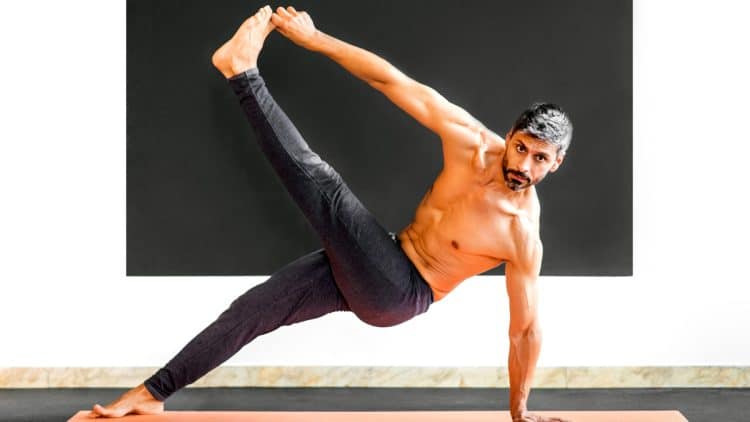
Most training programs overlook flexibility and mobility. Most youngsters believe they can do without it. Disregarding mobility for a prolonged period can be a disaster. Most injuries during training are because of muscle stiffness.
Add 5-10 minutes of mobility work into your training regime daily. It might feel like a lot of work, but it will pay dividends in the long run. Fixing long-standing mobility issues get more challenging with age.
Read also: Five-Minute Mobility Workout for Lifters
Later Year Training Approach For Old Man Strength
Folks considering starting their strength training journey in their 50s might be late, but it’s never too late. Strength sports welcome late bloomers with open arms. Here are the tips you should stick to while starting training in your later years:
1. Get More Active
After you’ve decided to take up weight training, resist the temptation of pumping heavy iron for the first few months. Start with relatively easy activities and build your aerobic and anaerobic conditioning. Go for walks, hike, swim, and jog before you start lifting weights. Jumping into weight training increases your odds of injury during exercise.
2. Perform Low-Intensity Exercises
You can start your strength training regimen after you complete a half-century, but you need to go slow. Start with mastering basic lifts and nailing your form. Chasing big weights exposes you to injury. Furthermore, recovery takes longer as you grow older. Your primary goal while starting training in the later years should be to increase your longevity.
3. Mobility is Key
Mobility is so important we had to include it in this section too. As you grow older, you’ll experience more overall muscle stiffness, especially after you wake up. You might also notice stiffness with weather changes. As you enter your 50s, you should work on your mobility daily without fail.
4. Consistency
You’ll experience relatively more muscle soreness after workouts in your later years. They should, however, at no point turn into an excuse to skip your training sessions. You need to work relatively harder and smarter than your younger peers in the gym to achieve your goals.
5. Recovery
It’s no secret that older folks require more time to rest and recuperate between workouts. You should listen to your body and take a day or two off to get back to a hundred percent. Sports nutrition supplements like whey protein powder and BCAAs can speed up your recovery. You should also use other recovery methods like sauna, steam, and deep tissue massages to keep your body operating at optimal levels.
Why Aim For Old Man Strength
Do you still need clarification about starting training after crossing your 50s? These reasons should help you make a decision:
Aesthetics
Most start lifting to look better. Pumping iron can make your skin and muscles look firm and appealing. Lifting weights can take years off your appearance, making you look younger and brighter. It can also keep you in a better psychological state.
Physical Weakness
You become physically weaker with age, which could lead to higher mortality rates and physical disability. Lifting to build old man strength can help you steer clear of these aging issues, making weightlifting an effective antidote for aging. Plus, building strength empowers you physically and mentally, reducing your dependence on others.
Increases Hormone Levels
A study proved that weight training in older adults increases hormone levels to the levels of untrained younger adults. Higher test levels can help burn excess body fat and build muscle mass and strength. [3]
Wrapping Up
Many people consider getting weaker a side effect of aging. Bodybuilders Frank Zane and Robbie Robinson would brush these aside as signs of laziness and surrendering control.
Strength is one of the most inspiring virtues in an older individual. This article has everything you need to know about old man strength and what to do to become the strongest version of yourself. Best of luck!
References
- Zirkin BR, Tenover JL. Aging and declining testosterone: past, present, and hopes for the future. J Androl. 2012 Nov-Dec;33(6):1111-8. doi: 10.2164/jandrol.112.017160. Epub 2012 Aug 9. PMID: 22879528; PMCID: PMC4077344.
- Sato K, Iemitsu M, Matsutani K, Kurihara T, Hamaoka T, Fujita S. Resistance training restores muscle sex steroid hormone steroidogenesis in older men. FASEB J. 2014 Apr;28(4):1891-7. doi: 10.1096/fj.13-245480. Epub 2014 Jan 17. PMID: 24443372.
- Alberga, A., Prud’homme, D., Kenny, G. et al. Effects of aerobic and resistance training on abdominal fat, apolipoproteins and high-sensitivity C-reactive protein in adolescents with obesity: the HEARTY randomized clinical trial. Int J Obes 39, 1494–1500 (2015). https://doi.org/10.1038/ijo.2015.133

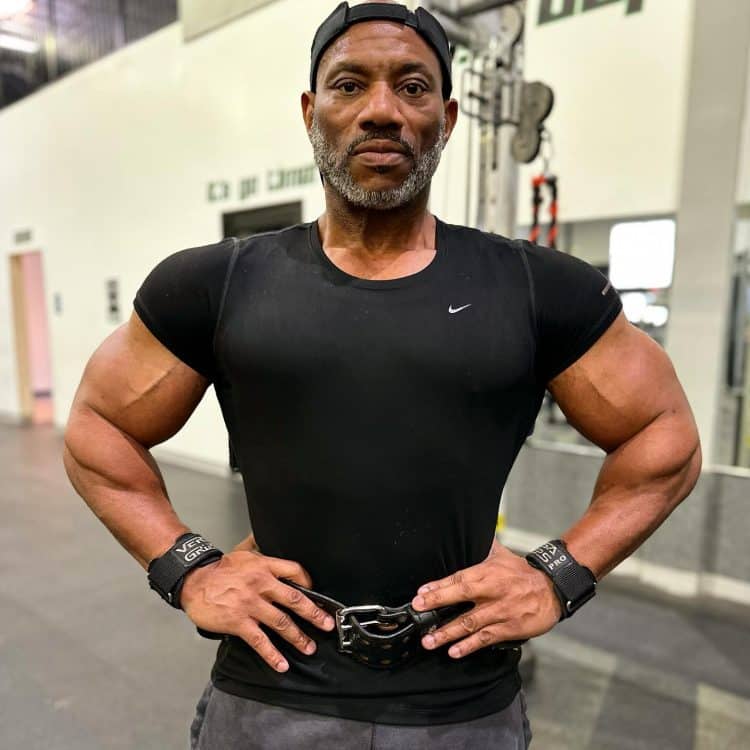
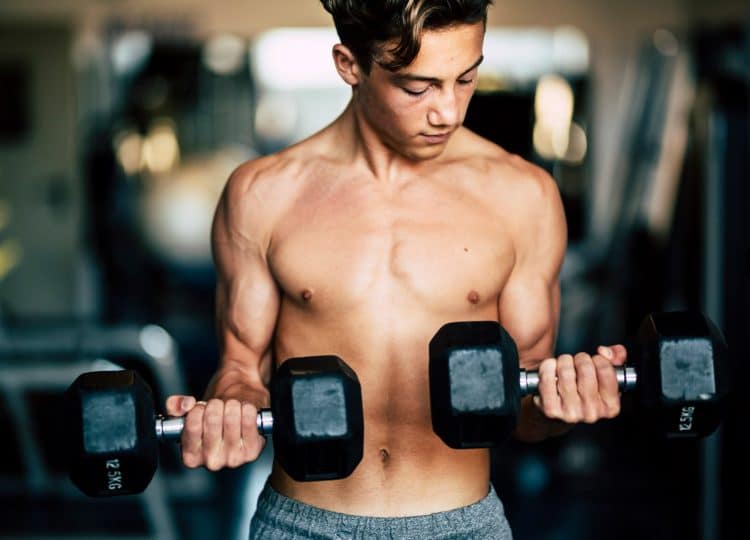
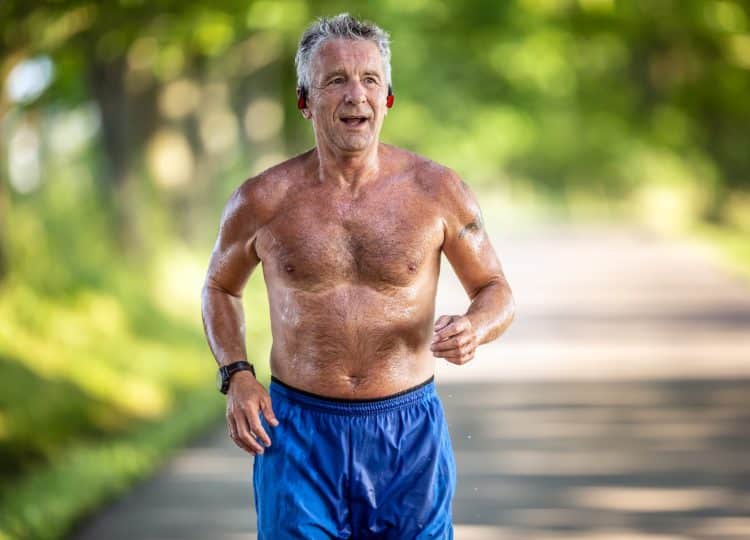








I’ve been training for four decades fountain of youth for reals @deficitdeadlift